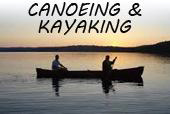There are many plastic tarps available, which can be turned to a myriad of uses. Whether for use as additional tent coverings, to cover supplies being transported in open top trucks, or protecting crops from inclement weather, there are a host of opportunities.

Made from high-density polyethylene (HDPE), they comprise a number of woven thermoplastic polymer sheets, which are laminated together. These multi layers not only afford great protection and provide wonderful insulation.
Derived from petroleum, they also have a very high tensile strength. Further, they can withstand internal and external temperatures which far exceed the capacities of other outdoor fabrics. UV treated, they are also inexpensive.
Made in a host of colors, they can be suited to any environment. Plastic tarps can also be found in a host of sizes and thickness. As such, there are different categorizations available; Light duty and heavy duty being the most popular. For those needing a little extra, super heavy duty products are available.
Light duty tarps tend to be 4 mils in thickness, weigh 4.5 ounces per square yard and have an 8 x 10 weave. Grommets are found every three feet. The heavy duty types are typically 12 mils thick, with a weight of 6 ounces per square yard and have a 12 x 14 weave and grommets spaced 18 inches apart.
Super heavy duty plastic tarps are approximately 14 mils thick, with a weight of 8.5 ounces per square yard with a 14 x 14 weave. As with the heavy duty, grommets are spaced 18 inches apart and have reinforced corner guard.
Due to the method and materials used in their manufacture, they are naturally lightweight and waterproof and extremely durable. The tarps are also very resistant to mildew and mold and rot. Antioxidants, which are very often added through the manufacturing process, prevents the tarps from degrading and cracking up, thus losing many of their benefits over time.












